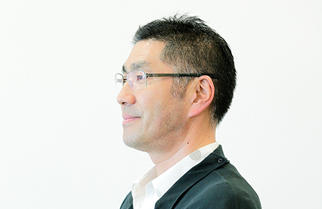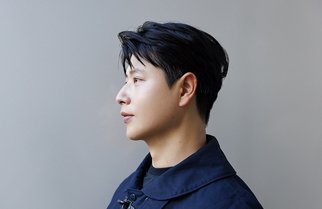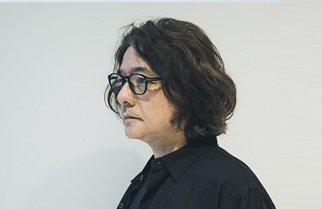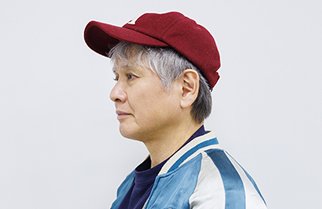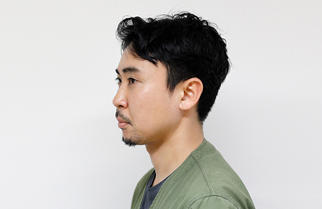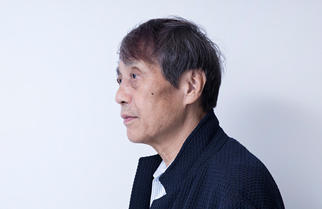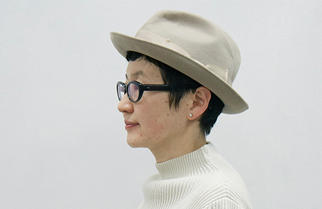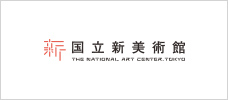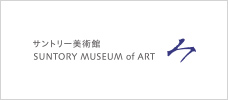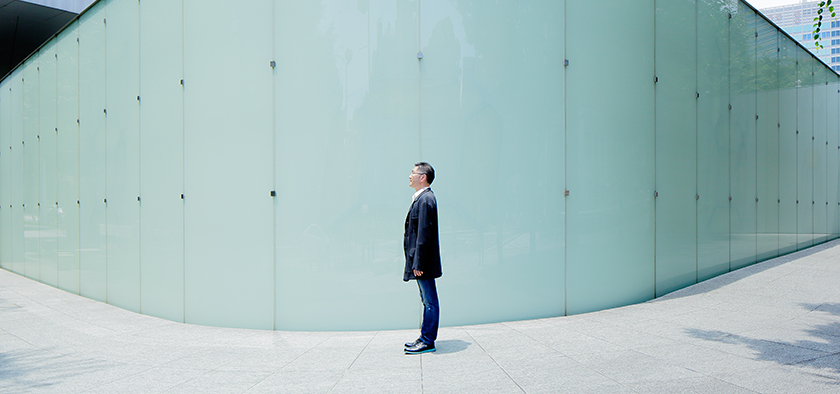
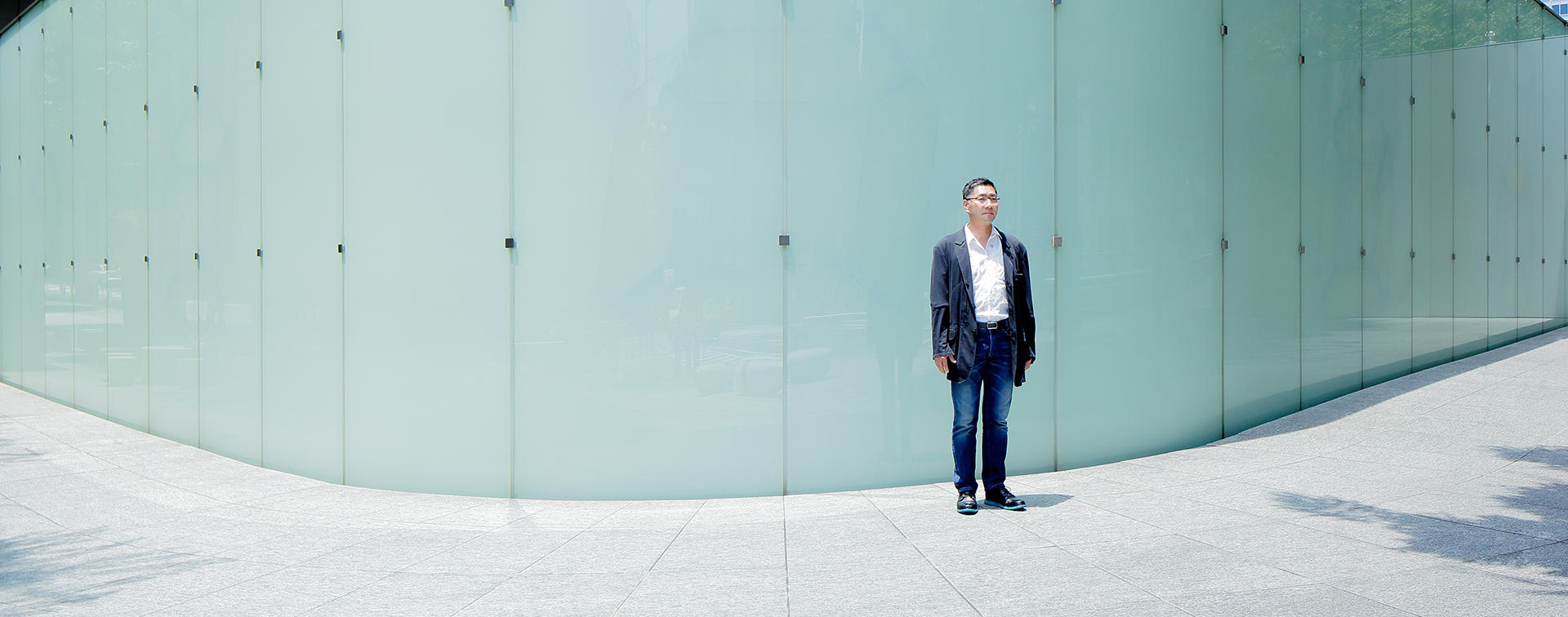
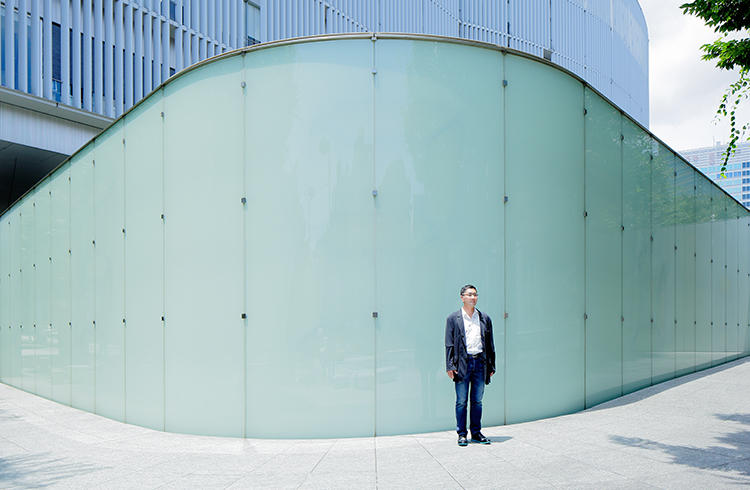
Thoughts on Counter Void, art and future of Roppongi
Public art as a platform for interaction
Tatsuo Miyajima, a contemporary artist well known both in Japan and overseas, is creator of "Counter Void", one of the main pieces of public art installed in Roppongi. After the Great East Japan Earthquake, Miyajima turned the lights off of "Counter Void", but a project called the "Rebirth of Light" Project to discuss illuminating the work again is now underway. Miyajima talked to us about a wide range of subjects, including why he switched off the lights, how the project to relight the work was started, and how the 3.11 earthquake disaster has led to the need for a new form of art.
The meaning behind the turned off lights
In line with my wish, the lights of "Counter Void" remain turned off. The lights can easily be turned on again with a switch, but I don't want to do that just yet. I turned the work off after the 3.11 Great East Japan Earthquake. Immediately after the disaster, I thought about what I should do as an artist, and it occurred to me that the first thing I could do was to turn Counter Void off. Of course, the decision was partly due to the energy problem, but I also wanted to offer a silent prayer to the people who had died - a prayer for the repose of their souls.
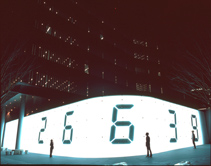
Counter Void
A huge glass screen 5 meters tall and 50 meters wide on which digital numbers from 1 to 9 appear in turn for varying lengths of time. The artwork was set up on the wall outside the TV Asahi building, but on March 13, 2011, the artist himself turned the work off.
Right after the disaster, there was an energy-saving movement; the movement also took place in Tokyo, and people seemed to think it was only natural for the lights of Counter Void to be turned off. Then as reconstruction of the devastated sites progressed, lights gradually began reappearing here and there in the streets, and billboards started glowing again. Personally, however, I've continued to feel uneasy and I haven't been able to find a reason to relight the work during the past three years.
A huge artwork that contorts space
Counter Void is a piece of public art that I made at the request of architect Fumihiko Maki-san when the new building for TV Asahi was being built. People often ask me, "Does the work express time?" but it's not really about time. (laughs) The digital numbers I employ in my works are symbols of human life and death, and it's the same with the Counter Void. The only difference is that since it is in Roppongi, the numbers are white in the daytime and black in the evening.
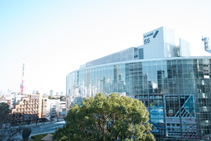
TV Asahi
The TV Asahi headquarters building, designed by architect Fumihiko Maki, was built within the compound of Roppongi Hills in 2003. In addition to offices and studios, the building has an atrium with glass panes on the northern side. "Counter Void" and two other pieces of public art selected by Maki are installed in the premises.
When I was a student, I often came here to dance in the discos; maybe this isn't a nice way to describe it, but for me, Roppongi is a frivolous place. By installing Counter Void, I wanted to bring in a very human aspect to the area - a reminder of the serious reality of life and death. Black and white both express death, but black makes more of an impact. So amid the nightlife scenery of Roppongi, this work is meant to evoke death with its mouth wide open.
When a huge work of art suddenly appears in the streets, it has the effect of transforming space. The surrounding space becomes contorted, and people feel a sort of pressure. The Counter Void had the effect I intended; in fact, its effect was bigger than I had hoped for. The people in the streets reacted to it in so many different ways. And after the work was installed, television crew and people from other media came here for shooting sessions. I was delighted to see that the work had become part of the scenery of Tokyo and that it had been accepted by the public.
"I'd like to see that work again"
Recently, a lot of people are telling me, "'I'd like to see that work again," so I'm beginning to wonder whether it's about time to relight it. After 3.11, people made an effort to save electricity, and the streets of Tokyo became dark, but the energy saving movement gradually faded, and now it's as if we never had the energy issue. But there are still many people living in temporary houses in the Tohoku region and there are also people who have not been able to take steps to rebuild their lives. So I'm wondering whether by relighting the Counter Void, we could refresh our memories of 3.11.
By turning on the work, we might also be able to draw attention to the fact that the lights were once turned off. At a recent talk event at Roppongi Art Night, a visitor was saying, "The Counter Void was originally a lighted work, was it?" I was shocked to hear that.
The fact that I once turned the work off and that it remains turned off would hold no meaning if there is an increase in the number of younger people who do not even know that it was originally a lighted work. It is only the people who know that the work was turned off who can be aware of the message that the lights have not returned yet. By relighting the work, I'm hoping that people will respond and ask why it was turned off in the first place. That's part of the reason for starting the "Rebirth of Light" Project.

Art belongs to the viewer, not the artist
After the earthquake, there were times when I would be creating works and my hands would stop moving. That's because 3.11 changed the world of art. Before 3.11, artists made their works and presented them in a haughty manner, as if saying, "Here, take a look at this." There was a macho view of the world - a view that people should gratefully appreciate the works of a genius.
That kind of view was in tandem with the structures of capitalism which were established in the 20th century, but that phase has reached its limit. With 3.11, it became clear that nature cannot be controlled, that humans can become totally helpless, and that we need to have proper respect for nature. So I think that art should no longer reflect the macho, capitalistic view of the world; art needs to be created in a different way.
The Rebirth of Light Project is about people making art their own flesh and blood. In other words, art doesn't belong to the artist who created it, but to the viewer. What matters is how each person interprets and thinks about a work. Importance should be placed on what kind of thoughts a work evokes rather than who made it. I think that's how art should be. Before 3.11, I'd held a variety of exhibitions and workshops on the concept of "Art in You", and the Rebirth of Light Project is aimed at turning that concept into a social movement.
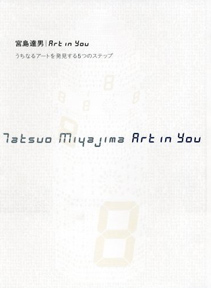
Art in You
"Art in You" expresses Tatsuo Miyajima's belief that artistic experiences and inspirations are linked to the power of imagination of the viewer. Based on this concept, a series of workshops were held in 2007 in four places in Japan including Hiroshima Peace Memorial Park. In 2008, the "Art in You" exhibition was held at Art Tower Mito.
Rebirth of Light Project - driven by ordinary people
The big goal of this project is to bring back the memories of 3.11. Also, I'm hoping that it will give people the opportunity to think about what kind of artworks and what kind of towns we want to have in the post-3.11 world. If this was simply about turning Counter Void back on, I could just go and push the switch, but it's not about that. It's about overcoming the energy problem, and holding discussions on the best thing we can do, and what steps can be taken to make us feel that we're allowed to turn on the lights again. And the point is that it's the members of the general public who are the viewers of Counter Void who are holding these discussions and taking steps to revive the work.

"Rebirth of Light"Project
A project by the Tokyo Culture Creation Project and NPO ArchArt to debate relighting "Counter Void". Dialogue between citizens is being promoted through study groups and talks on the future of this artwork. The photo is of the workshop held at Roppongi Art Night 2014. (©Masahiro Hasunuma )
http://countervoid.com/
It would be easy for me, the artist, to say, "I'd like to turn it on again, so please make a donation," and get things going. Actually, it may not be so easy considering the scale of the budget (laughs) but it's still something I could do. But that wouldn't be in line with my idea of art after 3.11.
Some people might think that since neon tubes consume a lot of electricity, light-emitting diode (LED) lights should be used instead. Some people might think that the electricity ought to be generated by solar power. After discussing everything, we might even come to the conclusion to not relight Counter Void after all. The work doesn't belong to me anymore; its ownership went to TV Asahi the day it was handed over to them. The work is like my daughter who got married and I'm the father in the hometown. (laughs)
After we come to a conclusion on Counter Void, we will need to decide on matters like construction work and expenses. Maybe this process of consensus building will take about three years; I hope that we come up with some kind of result.
Artwork as a tool for thinking about the future
Usually, when an artist and five or six influential people get together for an art project, things begin to take shape quite easily. But I want this project to expand like a sort of grassroots movement.
Perhaps I could tell it this way: Counter Void is like my daughter who left home to marry. One day my daughter becomes sick and needs to have an operation abroad. Money is needed for that. If the father makes an effort and raises money, saying "Please help so that my daughter can have an operation," that would be a rather macho method. But if the daughter had an attractive personality, her friends might help, and the circle of support would expand, and funds would be smoothly raised, or perhaps people might do some research and come up with another method. The father looks on, gives support and expresses gratitude.
The latter way is the approach I am taking with this project. The NPO people and the citizens are the ones taking the initiative. It wouldn't do for me, the artist, to go out there and voice my opinions, because that would be reverting to the macho structure, and people would inevitably attach importance to what I say.
I believe that art should prompt us to think about ourselves; an artwork should be a tool for contemplating our future and how we should ideally live. It would be great if the Counter Void could become a sort of platform - giving people the opportunity think about society in the future and about human lives.
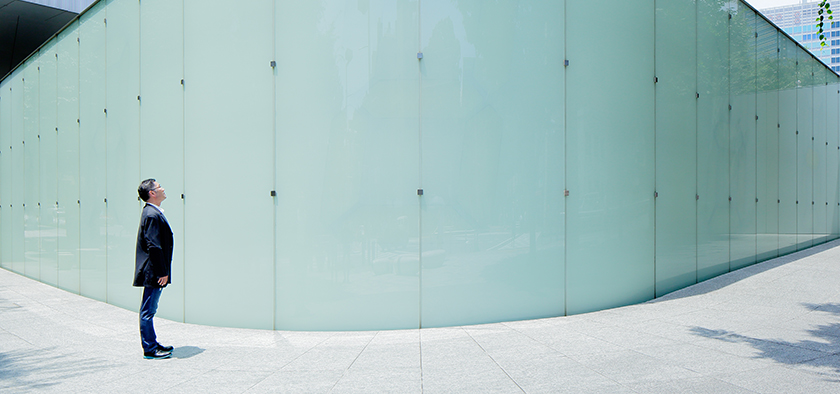
Remaking a work while keeping the concept unchanged
About 20 years ago, a Japanese company paid for the restoration of the frescoes at the Vatican's Sistine Chapel. But the paintings became so sparkly clean that they upset a lot of people who felt that they weren't supposed to look like that. There is that kind of risk in restoration. I personally have a wish to restore Counter Void and turn the lights back on, and at the same time, I also wish to set a precedent.
If many people could be involved in discussing the best way to preserve an artwork for future generations - if talks were repeatedly held and awareness was raised on art as a shared asset, a precedent could be set. Perhaps that precedent would lead to other artworks being renovated under the same process of consensus building. We would also be able to accumulate knowhow along the way. That's the kind of thing I have in mind.
Media is used in many contemporary artworks, but they become old or damaged. For instance, there are the famous works of Nam June Paik which employ cathode-ray tube (CRT) monitors. They are truly marvelous works, but CRT monitors aren't manufactured anymore and if those works became broken, we would never be able to see the same images again. That's why at the Nam June Paik Art Center, they've kept the outer framework of the CRT television sets, but replaced the insides with liquid-crystal displays (LCDs) and DVDs. There are all kinds of methods to renovate artworks, although there may be difference of opinion on which methods are good or bad. Without renovation, it's impossible to preserve artworks for posterity.
Nam June Paik
A pioneer of media art. (1932-2006) In 1963, made a video work using a TV set for the first time. Continued making innovative works and is referred to as the "father of video art." Many of his works are archived at the Nam June Paik Art Center in South Korea's Yongin City.
When I made "Sea of Time" which was my first artwork using LEDs, I realized that technology has its limitations. I made that work on the premise that its concept and design would remain unchanged but that the work itself would be perpetually remade. In other words, it's perfectly fine for neon tubes to replace the LEDs as long as the concept of life and death remains the same. It's similar to how the spirit of the Ise Jingu Shrine is perpetual. The shrine is rebuilt every 20 years, but the construction method and design are unchanged.
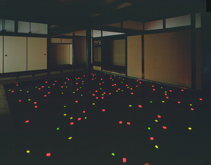
Sea of Time
An installation which is placed on the floor of a darkened room; the light-emitting diode (LED) numbers turn on and off. It was Miyajima's first work using LEDs. Shown at the Venice Biennale, it earned Miyajima a worldwide reputation. The photo is of "Sea of Time '98" at Kadoya installed as part of the Art House Project in Naoshima.
Counter Void in the future
For about one or two years after Counter Void was installed, an atmosphere of sanctity seemed to prevail in the streets of Roppong due to the sudden appearance of a new piece of artwork. But then after about three years, the work began to be taken for granted, and became a part of the everyday. And what happened was that some people began to park their cars or motorbikes in front of the work. And when too many cars were parked, the work was blocked from view. To prevent this, TV Asahi placed traffic cones around the work. Of course, the work doesn't look at all good like that.
Unless we look after them, there is always the possibility of such kind of things happening to artworks and pieces of public art. Roppongi is an area of design and art, so in contemplating its future, it's meaningful to think about ways of preventing such problems.
As I said earlier, I think of Counter Void as being a platform. The NPO undertaking the project and all the other participants are working on a long-term basis. I hope that the activities will continue. If and when a decision is made to turn the lights back on, I don't want people to think that the project is over. I hope that people will carry on their activities with a view to utilizing Counter Void.
A place for physical performance
The sidewalk in front of Counter Void is quite wide, and this is just an idea of mine, but maybe the space there could be used for some kind of performance. There is a flurry of information in Roppongi now, but there doesn't seem to enough physical, human activity.
I think Roppongi would become a very fun area if there was a place for dancers and street performers and artists of physical expression. If the Counter Void could be more than just an artwork and be used as a platform, it would not be taken for granted; its location would become a place where something fresh is always being created. Things would become interesting if the Rebirth of Light Project could grow and eventually oversee the operation such a place.
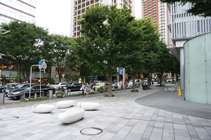
The sidewalk in front of Counter Void
A space that is like a public square at the intersection of Keyakizaka Dori and Kanjo Sango-sen Avenue, opposite TSUTAYA TOKYO ROPPONGI. Street furniture is installed on the wide sidewalk in front of Counter Void.
I've talked a lot about complicated matters, but it's a fact that no matter how sleek a town is, it will always have an unsophisticated aspect as long as there are people bustling in it. Amid talk about this being the age of the information society and the Internet, we cannot eliminate or change the very real, human part of society. That's why in the art world, there is a renewed appreciation of the performing arts. It would be nice if art and towns were created on the reality of the human element; I'm currently doing some thinking on how this can be done.
Editor's thoughts
This interview was held in front of an audience. Afterwards, there was a small party with the readers of Roppongi Future Talks. Throughout the interview and the party, Miyama referred to the Counter Void as his "daughter." I personally think that Counter Void is like a dashing son... I wonder how the reader feels.(edit_kentaro inoue)




